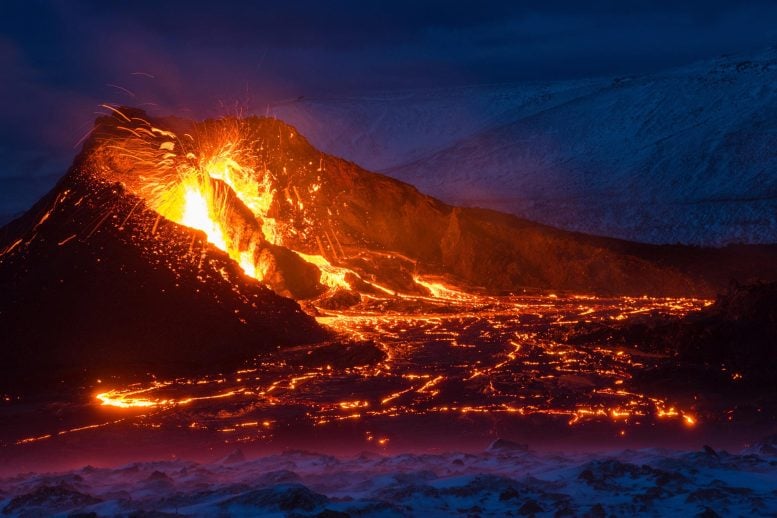
In new research, scientists from Imperial College London have observed magma taking an unexpected route beneath volcanoes, providing new insights into the mechanics of eruptions.
Imperial College London researchers have observed magma taking an unexpected route beneath volcanoes, shedding light on the processes behind eruptions.
The findings were based on data from a tectonic plate boundary in the Eastern Caribbean region. The results help us understand what drives the type and rate of volcanic eruptions, as well as the make-up of erupted magma. They could also help us understand why some volcanoes are more active than others, and why volcanic activity changes over time.
When two huge tectonic plates collide, one plate can sink, or subduct, beneath the other, plunging into Earth’s mantle to release water and melt. As the plates rub together and the melted material rises to form magma, these subduction zones are responsible for some of Earth’s most hazardous earthquakes and explosive volcanic eruptions.
“We show that the interplay of these two driving forces over hundreds of millions of years is key to controlling where eruptions occur today.” — Dr. Stephen Hicks, Department of Earth Science and Engineering
However, it remains poorly understood how magma forms underground and what controls the exact position of volcanoes on top of the overlying plate.
Now, a new study published in the journal Science Advances on February 1, 2023, shows how rising magma, which eventually erupts, does not always take the shortest, most direct path available to reach volcanoes at the surface.
Lead author Dr. Stephen Hicks, who undertook the work at Imperial’s Department of Earth Science and Engineering and now works at UCL, said: “Scientific views in this much-debated subject have traditionally fallen into two tribes. Some believe the subducting plate mostly controls where the volcanoes are, and some think the overlying plate plays the biggest role. But in our study, we show that the interplay of these two driving forces over hundreds of millions of years is key to controlling where eruptions occur today.”
Under pressure
Subducting oceanic plates act as giant reservoirs, transporting water into the deep Earth. These fluids enter the plate through fractures and faults formed during its birth and where it later bends beneath Earth’s deep ocean trenches. Water gets locked into fractures and bound into minerals within the plate.
Subducting plates are subjected to high pressures and temperatures as they plunge to between ten and 100 kilometers deep. These extreme conditions cause the locked-in water, and other volatile elements, to be driven off. These fluids, which melt the warm mantle above, are the key ingredient of magma that eventually erupts around arcs of volcanoes at the edges of Earth’s oceans, such as the Pacific Ring of Fire. Yet the pathways that fluids and melt take deep within the Earth, from the subducting plate to the volcanic arc, cannot be directly seen nor easily inferred from what is erupted.
“Our findings give us important clues about the processes behind volcanic eruptions, and could help us to better understand where the magma reservoirs below volcanoes get formed and replenished.” — Professor Saskia Goes, Department of Earth Science and Engineering
To carry out the study, the researchers used earthquake data to map seismic absorption in 3D, similar to how a CT scan maps the internal structure of our bodies. When seismic energy from earthquakes travels through different materials, the waves either slow down or speed up. Along with these speed changes, the energy of waves also dissipates. Hot and molten rock is particularly attenuating: it zaps energy from seismic waves as they travel through it.
The team collected seismic data from a subduction zone in the Eastern Caribbean that resulted in the Lesser Antilles’ volcanic islands, by using ocean-bottom seismometers to build an accurate 3D picture of the subsurface.
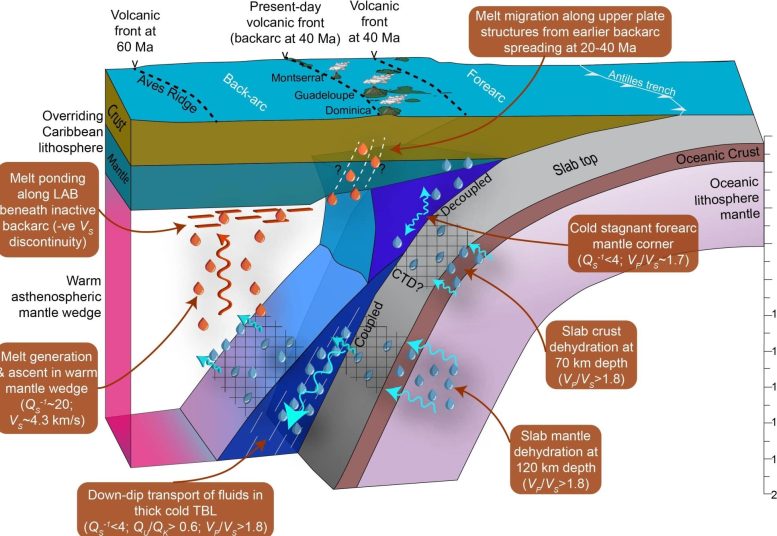
The researchers used earthquake data to map seismic absorption in 3D, similar to how a CT scan maps our bodies. Credit: Hicks et al./Imperial College London
Unusually, the study found that the zone of strongest seismic attenuation at depth was offset sideways from beneath the volcanoes. These images led the authors to conclude that once water is expelled from the subducting plate, it is carried further downwards, leading to mantle melting behind the volcanic front. Melt then pools at the base of the overriding plate before it is likely transported back toward the volcanic arc.
Study co-author Professor Saskia Goes, also of the Department of Earth Science and Engineering at Imperial, said: “Our knowledge of fluid and melt pathways has traditionally been focussed on subduction zones around the Pacific. We decided to study the subduction of the Atlantic instead because the oceanic plate there was formed much more slowly, accompanied by more faulting, and it subducts more slowly than in the Pacific. We felt these more extreme conditions would make fluid and melt pathways more imageable using seismic waves.
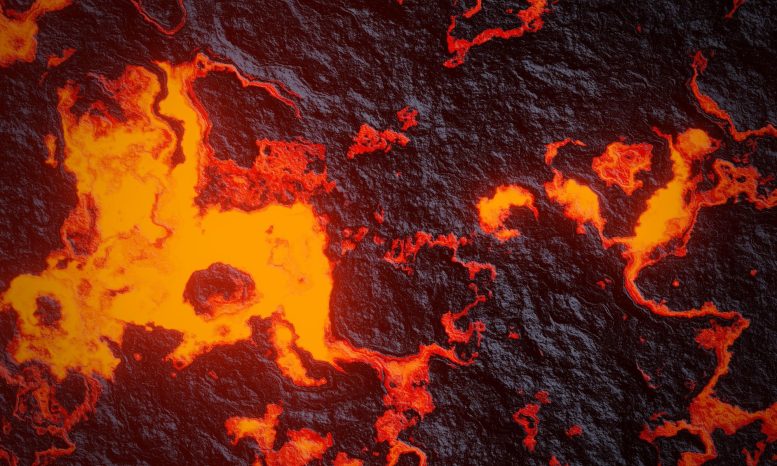
Understanding magma helps us understand volcano activity.
“Our findings give us important clues about the processes behind volcanic eruptions, and could help us to better understand where the magma reservoirs below volcanoes get formed and replenished.”
Reference: “Slab to back-arc to arc: Fluid and melt pathways through the mantle wedge beneath the Lesser Antilles” by Stephen P. Hicks, Lidong Bie, Catherine A. Rychert, Nicholas Harmon, Saskia Goes, Andreas Rietbrock, Songqiao Shawn Wei, Jenny S. Collier, Timothy J. Henstock, Lloyd Lynch, Julie Prytulak, Colin G. Macpherson, David Schlaphorst, Jamie J. Wilkinson, Jonathan D. Blundy, George F. Cooper, Richard G. Davy, John-Michael Kendall and VoiLA Working Group, 1 February 2023, Science Advances.
DOI: 10.1126/sciadv.add2143
The published paper results from an international collaboration between scientists from the United Kingdom, the United States, Germany, and Trinidad.
The study was funded by the Natural Environment Research Council (NERC), part of UKRI.


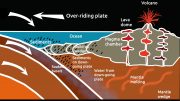
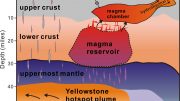
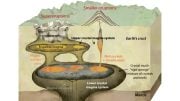
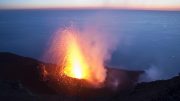
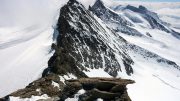

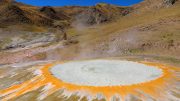

“… it ZAPS energy from seismic waves …”
How very unscientific. Usually, the colloquial “zap” means the opposite of the implied absorption. Did they intend to write “saps”?
Why am say washingtondc think they can veto bad dream aka bible.=yellowstone!